Graphic Novels: At Home in School Libraries
Graphic novels have become not just a fixture in the cultural firmament but also a true force in the literary world. While genres, styles, and topics may vary wildly, one thing that publishers agree on is this: Making graphic novels available in school libraries can give children access to stories they might otherwise miss.

There’s no doubt about it: Graphic novels are having their day! Using images to illustrate a story, the first graphic novel was published in the United States in 1842, as a serial in a weekly humor magazine. Today, graphic novels are stand-alone, often beautifully crafted works about everything and for everyone, and the sales numbers demonstrate the impact they are having. According to the 2018 Comics & Graphic Novel Industry Report, graphic novel sales totaled $635 million in 2018, and sales in book channels grew in double digits, with kids’ graphic novel sales the biggest factor in that increase.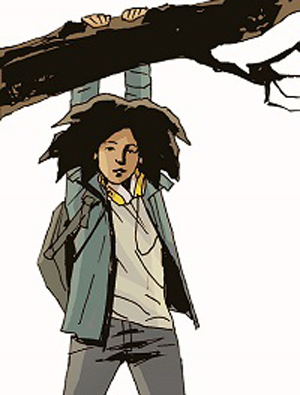
The unique ability of graphic novels to engage readers of all kinds is clear in the format’s popularity, and nowhere is this truer than in the children’s market. From a platform once dominated by superheroes and monsters, graphic novels have emerged as a format that appeals to all age groups and across all genres—from fables to fairytales, coming-of-age stories to social commentary, nonfiction and even autobiographies. Whether tackling tough subjects, like divorce or bullying, or taking kids on high-flying adventures, graphic novels are playing an important role in connecting today’s youth to the written word.
Support for the format is coming from librarians, educators, ALA round table discussions, and the CBC’s Graphic Novel Committee. School librarians, early proponents of the format, are delving into the extensive catalog of graphic novels to meet student demand, while the AASL’s Standards for the 21st Century Learner is encouraging the adoption of graphic novels into the curriculum and even Common Core state standards.
That graphic novels have been accepted on an institutional level reflects their penetration of the culture and ensures their place in it for the foreseeable future. Publishers have taken note. From seasoned publishers to new kids on the block, they are rising to the challenge to bring more content alive through this visual platform, and no genre is being ignored as a worthy contender for the next graphic novel.
Random House Graphic
Graphic novels provide a robust publishing platform that’s ripe for more growth, according to Gina Gagliano, the publishing director for Random House Graphic, RH’s children’s graphic novel imprint. While Penguin Random House isn’t new to children’s graphic novels, the market passion for the format led to the creation of this dedicated imprint in 2018 and underscores how deeply ingrained graphic novels have become in the social fabric.
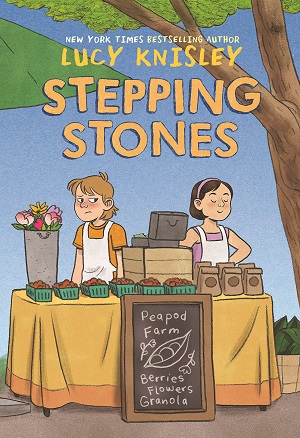 Seeing an opportunity to transform the format and broaden its reach, Gagliano hopes to get a graphic novel on every bookshelf and reach children of all ages and interests. With approximately 12 graphic novels slated for 2020, two titles in particular demonstrate how graphic novels can tackle tough issues, and do it in an engaging, humorous and visual way.
Seeing an opportunity to transform the format and broaden its reach, Gagliano hopes to get a graphic novel on every bookshelf and reach children of all ages and interests. With approximately 12 graphic novels slated for 2020, two titles in particular demonstrate how graphic novels can tackle tough issues, and do it in an engaging, humorous and visual way.
The Runaway Princess by Johan Troïanowski, January 2020, ISBN 9780593124161, focuses on Robin, a bored princess who is stuck at home. Tired of her circumscribed princess life, the courageous and spunky Robin decides to leave and seek out adventures in a magical landscape. She might succeed, if her parents weren’t in hot pursuit. Appealing to eight- to 12-year-olds, this interactive graphic novel invites children to join a fun and lively adventure, illustrated—unusually—in watercolors.
Stepping Stones by Lucy Knisley, May 2020, ISBN 9780593125243, is an autobiographically inspired story about a girl named Jen, whose parents’ divorce causes her life to change dramatically. After the divorce, Jen’s mother moves her out of New York City and onto an organic farm upstate. There, she confronts daily farm chores, her mom’s new boyfriend, and two new “sisters.” Readers will empathize with Jen, as she processes all these changes and challenges. This work for eight- to 12-year-olds is the first to tackle the topics of divorce and blended families in graphic novel format.
Humanoids
“It’s really difficult these days to get kids to read, but having images gives them enough comfort to fall into a story,” says Harley Salbacka, sales representative at Humanoids. The company’s BiG imprint, one of three central imprints at this graphic novel publisher, focuses on visual content for children of all ages. Books are leveled to make it easier for parents and kids to choose the right titles. BiG’s catalogue includes graphic novels for children from age four all the way up to YA readers.
Bigby Bear: The Explorer by Philippe Coudray, March 2020, ISBN 9781643379357, picks up the adventures of Bigby for this third installment. This time, the curious bear and his woodland friends are exploring the universe, taking a close look at the ocean and space. Bigby’s experiments may be a little silly, but his desire to understand how the world works is real. Encouraging others to follow their curiosity, Bigby makes new friends along the way in this feel-good tale for all ages.
Where Are You Leopold? by Michel-Yves Schmitt, with art by Vincent Caut, April 2020, ISBN 9781643375403, is a fun story for kids ages three to seven, about a little boy named Leopold who can turn invisible. Rather than employ his power to transform into a superhero, he uses his invisibility to play youthful pranks, mostly on his sister, Celine. The story is replete with adventure and sibling bonding, and a nemesis for Leopold in the form of a little girl whose tattling about Leopold’s secret falls on deaf ears.
First Second
One of the great advantages to graphic novels for children, according to Calista Brill, editorial director at First Second, is that they are not so category-bound. An imprint of Macmillan, First Second focuses almost exclusively on graphic novels for pre-readers up to adults. For Brill, graphic novels are about “exploring the range of what can be done in print,” and the more variety that emerges from the medium, the more success it will generate.
To this end, First Second’s catalogue is highly diverse, offering a wide range of stories for different readers. “We like the idea of pushing the boundaries of the format in a way that also honors the graphic novel and its artistic element,” says Brill. Content for middle grade readers comprises the largest part of the imprint’s list, bookended by a line of elementary and early reader titles on one side and a robust teen section on the other. First Second will publish 30 new titles this year, including:
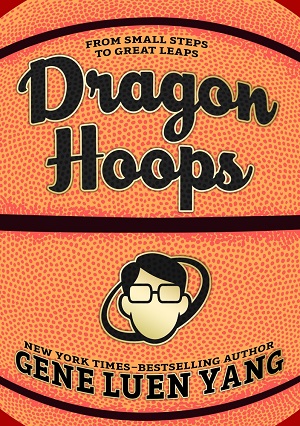 Astronauts by Jim Ottaviani, with art by Maris Wicks, February 2020, ISBN 9781250760036, is the second book by this creative team. Their first book, Primates, covered the lives of the three greatest female primatologists—Jane Goodall, Dian Fossey, and Birtué Galdikas. The focus in this second volume is on the contributions of female astronauts during the Space Race. This graphic novel for ages nine to 13 takes a close look at the lives of the first women in space: Mary Cleave, an American, and Valentina Tereshkova, a Russian. Astronauts tells the story of their incredible drive and achievements with a touch of humor.
Astronauts by Jim Ottaviani, with art by Maris Wicks, February 2020, ISBN 9781250760036, is the second book by this creative team. Their first book, Primates, covered the lives of the three greatest female primatologists—Jane Goodall, Dian Fossey, and Birtué Galdikas. The focus in this second volume is on the contributions of female astronauts during the Space Race. This graphic novel for ages nine to 13 takes a close look at the lives of the first women in space: Mary Cleave, an American, and Valentina Tereshkova, a Russian. Astronauts tells the story of their incredible drive and achievements with a touch of humor.
Dragon Hoops by Gene Luen Yang, March 2020, ISBN 9781626720794, is the true story of what happened when Yang, a computer science high school teacher, stepped out of his “nerdy” comfort zone to chronicle the experience of a men’s varsity basketball team as they shoot for the California State Championships. This emotional story from the former National Ambassador for Young People's Literature shows what happens when one person takes the time to connect with people whose passions differ from his own. This journalistic account of the author’s journey getting to know these young all-stars will speak to teen and adult audiences alike.
InvestiGators by John Patrick Green, February 2020, ISBN 9781250219954, promises to deliver maximum silliness as it chronicles the adventures of Mango and Brash, a pair of sewer-loving, secret agent alligators, who flush themselves down the toilet to secretly navigate their city and solve mysteries. Undercover and on the case, the duo’s first mission involves two mysteries to solve. This spy-caper is goofy, fun, full of puns, and perfect for ages seven to ten. It also won’t be the last time you see these two, to the discouragement of super-villains everywhere!
Mark Sahagian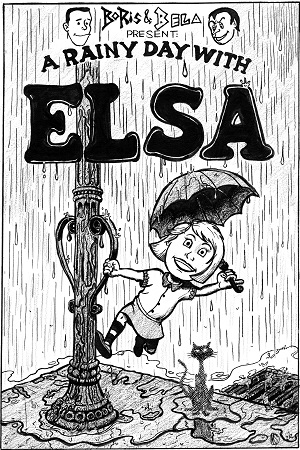
Publishing his first full-length graphic novel for children, Mark Sahagian is excited to be putting his creative talents to work for young readers. Sahagian previously worked as a political cartoonist, publishing over two dozen mini-comics for adults. His jump to producing kids’ content comes at a time when he feels this fluid art form is evolving into something much more inclusive.
Self-published and currently available on Amazon, Boris & Bela, ISBN 9780578403311, chronicles the humorous adventures of the “world’s biggest monster fans,” as they venture into the world with their friend, Elsa. Their active lifestyle engages three dimensionally with the world and reminds kids of the excitement that lies just outside their front doors. This series of encapsulated stories is appropriate for all ages.
Graphic Universe
Graphic Universe, an imprint of Lerner Books, appreciates that the graphic novel market "accommodates an extensive range, so there’s always room for growth," says senior editor, Greg Hunter. There are “a lot of advantages to the form and to the combination of word and image,” Hunter says, including helping children foster a passion for reading. This is one reason why the demand for graphic novels continues to grow, leading to Graphic Universe almost doubling their number of new titles in 2020 over the previous year. In the coming year, Graphic Universe will both reintroduce popular characters from the past and bring new ones to the fore.
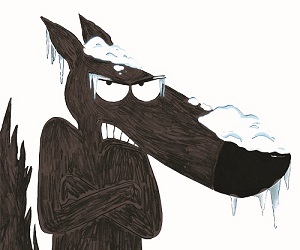 The Wolf in Underpants Freezes His Buns Off by Wilfrid Lupano, with art by Mayana Itoïz and Paul Cauuet, March 2020, ISBN 9781541528192, grapples with misconceptions and what can happen when people misinterpret someone’s intentions. A sequel to The Wolf in Underpants, this entry mixes silliness with a social message at the heart of the story. In the latest book, the wolf’s sour demeanor is misconstrued as something the other forest creatures should fear. In reality, he’s harboring a great concern for how the smaller animals in his woodland home will fare in the cold. This fable-like tale is perfect for children ages seven to eight, but the message is one a younger child can grasp, too.
The Wolf in Underpants Freezes His Buns Off by Wilfrid Lupano, with art by Mayana Itoïz and Paul Cauuet, March 2020, ISBN 9781541528192, grapples with misconceptions and what can happen when people misinterpret someone’s intentions. A sequel to The Wolf in Underpants, this entry mixes silliness with a social message at the heart of the story. In the latest book, the wolf’s sour demeanor is misconstrued as something the other forest creatures should fear. In reality, he’s harboring a great concern for how the smaller animals in his woodland home will fare in the cold. This fable-like tale is perfect for children ages seven to eight, but the message is one a younger child can grasp, too.
Distant Stars by MariNaomi, March 2020, ISBN 9781512449129, is the last book in the "Life on Earth" trilogy. This YA novel explores coming of age themes through the trope of alien intervention in the world. From the common hardships of growing up and falling in love, Paula Navarro and her group of friends are average teenagers—apart from living with the possibility of visitors from another planet! They’re still insecure in their relationships, nursing crushes, and struggling to communicate with their parents. This graphic novel takes a unique approach to sharing these teenagers’ stories. The narrator and the artistic style change with each chapter, giving readers a clear separation between each characters’ point of view.
What’s on the horizon
“It’s exciting how many publishers are getting involved in graphic novels,” says Calista Brill of First Second, who sees more people dedicated to creating new and different content specifically for the platform, and the quality of the content rising. Graphic novels have become not just a fixture in the cultural firmament but also a true force in the literary world.
While genres, styles, and topics may vary wildly, one thing that publishers agree on is this: Making graphic novels available in school libraries can give children access to stories they might otherwise miss, in an artistic and visual format that stimulates them toward a lifelong love of reading.
SPONSORED CONTENT
Add Comment :-
RELATED
The job outlook in 2030: Librarians will be in demand
The job outlook in 2030: Librarians will be in demand
ALREADY A SUBSCRIBER? LOG IN
We are currently offering this content for free. Sign up now to activate your personal profile, where you can save articles for future viewing





